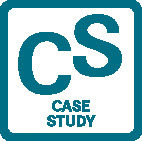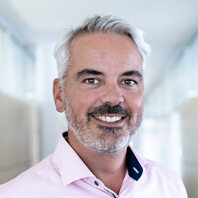10/17/2017 21:58:00 CEST Flexible machines and materials facilitate mass customization. A new additive production process is establishing itself as an alternative to 3D printing: with “patch placement”, Manz in Reutlingen offers a key building block for customized mass production.
 “Off the shelf” products can be produced reliably and inexpensively in large quantities. However, this kind of production can’t cope with increasing demands for customized components or consumer goods in many industries. This is why Manz expects to see growing interest in flexible and automated production solutions that facilitate customized mass production, or mass customization.
“Off the shelf” products can be produced reliably and inexpensively in large quantities. However, this kind of production can’t cope with increasing demands for customized components or consumer goods in many industries. This is why Manz expects to see growing interest in flexible and automated production solutions that facilitate customized mass production, or mass customization.
One technology may become essentially important for this process: the newly developed patch placement technique. Flexible roll materials are laser-cut into the contours (patches) that the customer needs. These patches are then combined in an additive layering principle, for instance using laser welding. Patch placement is already being used for customized mass production in the shoe industry or to produce custom-tailored sports equipment and medical walking aids. In all of these applications, customer data entered using a product configurator such as height, weight, desired color and special functions can be both transferred to production and processed digitally.
Any “processable” textile fiber, plastic foil, fiber composite materials such as carbon composites, or other flexible materials can be used. Patch placement can be used to shape these into geometrically complex structures – with the best possible stability and the lowest possible material use and weight: patch placement only applies a thicker layer in areas exposed to increased mechanical strain, fulfilling the highest demands for lightweight construction. There's almost no material waste, and different materials and colors can be combined “from the roll,” or to put it more precisely, from multiple rolls without having to go through complex plant conversion processes. The advantage that patch placement has over 3D printing is that it allows for much higher material throughput and shorter production cycles.
“The patch placement process is useful for any manufacturer that is having a hard time managing a large number of different versions of its products and that places high demands on flexibility in production,” says Dr. Martin Steyer, who manages the area of Integrated Solutions at Manz, “Two features of our system allow it to offer such highly flexible and customizable mass production: its toolless design and free programming capabilities. Both of these allow for inexpensive conversions using the software, without time-consuming mold exchanges. Product changes can be completed in real time and fully automatically.” This means customized products can be produced like mass serial products, greatly accelerating their delivery cycles.
Patch placement systems truly reveal their strength in a networked Industry 4.0 production environment. In combination with web-based developer platforms or product configurators, digital material databases, and logic-based sample production, it is possible to develop extremely flexible, fully automated production chains – as locally networked production “Made in Germany,” or even across national borders. With customers directly involved in product development by entering their requests in browser-based configurators, the term “open source” takes on a whole new meaning.
Patch placement by Manz:
technical data
- Maximum roll material width: 500 mm
- Maximum size of individual patches: 240 x 80 mm
- Patch geometry freely programmable
- Patching cycle duration: 5 seconds including cutting, engraving, placing, and attaching
- One machine cell can work with three different rolls of material
- Patch placement plants can be linked to create one production
